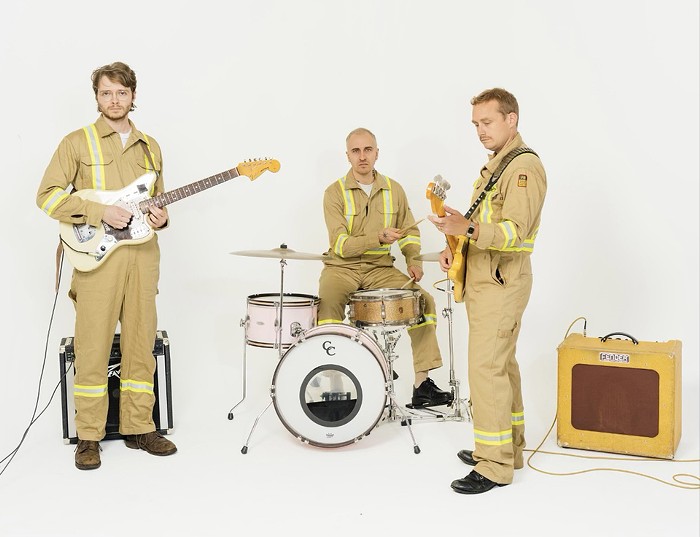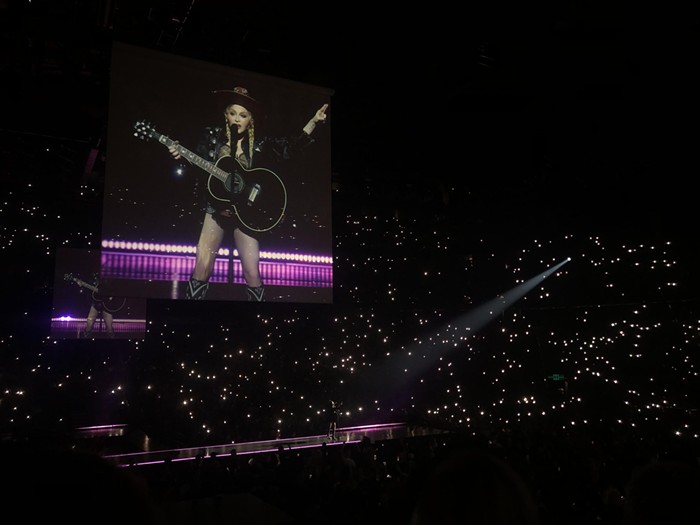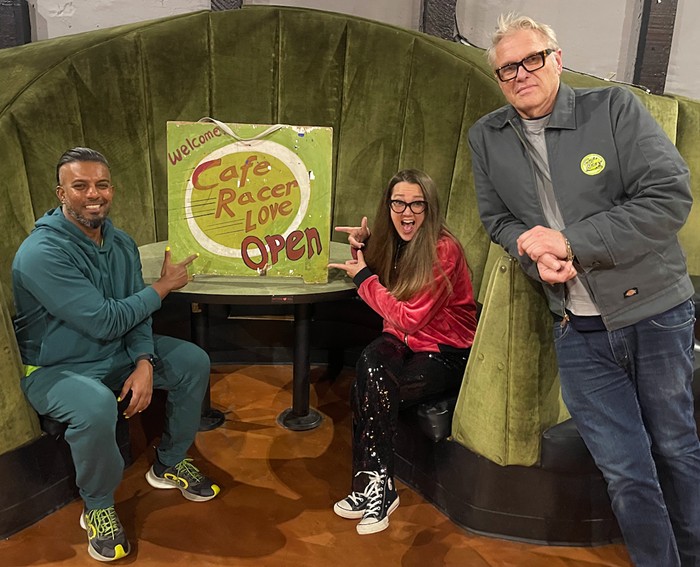When they began assembling The Best of the Best Show box set, Tom Scharpling and Jon Wurster were faced with a problem a lot of artists would probably consider a good problem to have: too much material to choose from.
Scharpling hosted The Best Show on New Jersey public radio station WFMU every week for 13 years, talking irascibly about current events and pop culture, interviewing guests, playing music, and, most notably, fielding calls from listeners. These calls offered a great inversion of the classic talk-radio formula, aided by Scharpling's quick wit and effortlessly caustic tone—rarely has a broadcaster gotten more comedic mileage from simply repeating words that have just been spoken by a caller. The on-air persona he developed was not so much cranky as beleaguered by bullshit and intolerant of stupidity (while skillfully egging it on for the sake of good radio).
A further inversion came in the form of regular calls from Wurster, in the guise of a series of characters, including archetypal Philadelphian Philly Boy Roy, Fonzie inspiration the Gorch, or Corey Harris (né Dinkins), lead singer for Mother 13, the ultimate corporate alternative rock band. Scharpling would shift into straight-man mode as Wurster, whose day job is drumming for brilliant rock bands (Superchunk, Bob Mould, and Mountain Goats, among others), gave voice to the increasingly ludicrous gallery the pair created in the space between shows—much to the delight, annoyance, and bafflement of listeners. The dialogue was often sharply satirical—Mother 13's increasingly desperate efforts to collaborate with a music biz in decline ranged from a berth on the Huggies Fall into Softness touring festival to an effort to be the first band to play on Mount Everest—but just as often it was blatantly absurd (see Marky Ramone's erotic fiction, or Zachary Brimstead's barbershop-quartet arrangements of Neko Case songs).
Though the collaboration between Scharpling & Wurster evolved over the years, in some ways its perfect expression was the first call they did. Wurster played Ronald Clontle, author of Rock, Rot & Rule, a compendium of all rock bands, broken down by which ones rock, which ones rot, and which ones rule. The premise was funny, and the rhythm of their timing bore the signs of an old-style radio comedy team—more Bob & Ray or Proctor & Bergman than Abbot & Costello. But the real joy of the piece comes from hearing the other, plainly unaware callers grow increasingly frustrated by both Wurster's unflappable pronouncements (Aerosmith? Rule. The Who? Rule. The Beatles? Rock. Etc.) and the premise that his book represented "the ultimate argument settler."
After 45 minutes, it was clear the formula was full of promise. After 13 years, however, the duo had amassed hundreds of hours of this material. Some of it had been issued on best-of CDs that were released between 1999 and 2007, but most of it had only been heard when it was broadcast—or by the devout network of tape (and later MP3) traders who spread the word about these calls. That underground network expanded as the indie-rock culture these calls mocked so deftly began to reach a wider audience. The show moved off WFMU and became a podcast last year. A box set, and the live shows Scharpling and Wurster have started performing, were logical, if not inevitable, next steps in their evolution.
"We knew what characters we liked," Wurster said in a phone interview last week. "But we'd done so many that we lost track. We were always on to the next one."
Compiling the box "was really the first time we had looked back," Scharpling said in a separate interview. "I was really proud to see that we'd built this giant pyramid of phone calls, one brick at a time." ![]()



















